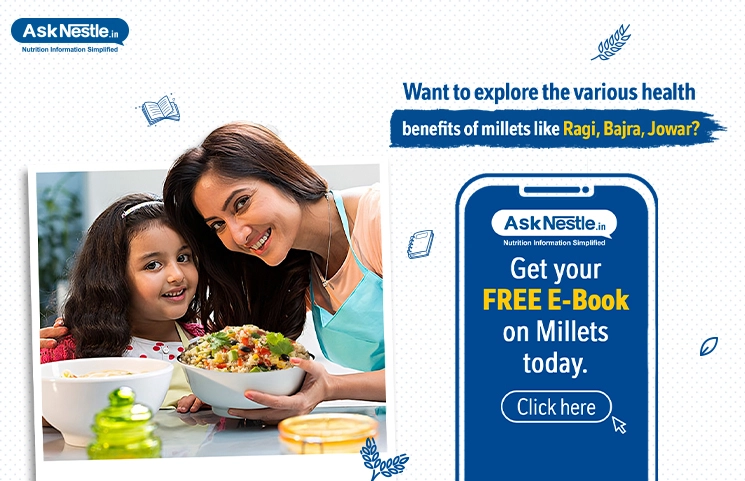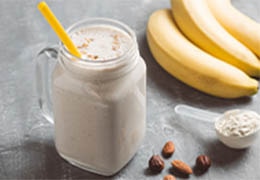Yes, you will never forget that day when you brought your baby home – a tiny little thing swaddled snugly in a blanket and sleeping like an angel. And yet, before you even realise it, he or she starts to crawl and explore, roll over, express likes and dislikes, utter simple words and even socialise. For parents, there is nothing more exciting than watching your children reach new milestones every day. However, at times, it might seem that your little one is not developing as fast as you imagined he would. Though every child is unique and follows a different pace of growth, it helps to know about the various milestones he is supposed to reach as a toddler. The following tables will guide you in this regard:
| Developmental milestones | Social/Emotional development | Communication/Language development | Mental/Cognitive development | Physical/Motor/Sensory development |
|---|---|---|---|---|
| From birth to 2 months | ● Starts to smile at people, especially as a response to voice ● Brings hands to mouth to calm self for a short period ● Tries to look at mom or dad |
● Starts cooing and makes gurgling sounds ● Recognizes sounds and tries to turn head towards it |
● Pays attention to faces ● Follows objects with eyes and acknowledges people at a distance ● Does not like to be bored so cries and becomes fussy when bored with an activity |
● Can hold the head up ● Starts pushing up while lying on tummy ● Uses hands and legs to make smooth and easy movements |
| By the age of 4 months | ● Smiles spontaneously, especially when looking at people ● Likes to play with people and cries if no one plays with him/her ● Copies some facial expressions like smiling and frowning |
● Starts to babble with expressions ● Cries in different ways to show hunger, pain or being tired |
● Expresses various moods, like happy or sad ● Responds well to affection ● Reaches toys using one hand ● Starts using hands and eyes together to locate toys and reach for them ● Starts to watch faces closely |
● Holds head steadily and without any support ● When feet are on a hard surface, makes effort to push down on legs ● Starts to roll over ● Can hold a toy and shake it ● Starts oral exploration by bringing hands to mouth |
| By the age of 6 months | ● Identifies strangers as he starts to recognize familiar faces ● Likes to play with parents and others ● Starts responding to other people’s emotions and often seems happy ● Enjoys watching self in mirror |
● Makes sounds in response to other sounds ● Makes sounds when babbling ● Reacts in that direction when called by his/her name ● Uses sounds to express joy and pleasure |
● Explores objects around his/her vicinity ● Watches objects nearby ● Starts pulling things towards mouth ● Becomes curious about things and tries to collect those that are beyond reach ● Uses both hands to pass things |
● Starts rolling ● Sits without support ● Supports weight on legs while standing ● Increases movements, rocks back and forth, and at times, also crawls backward before moving forward |
| By 1 year | ● Is interested in hearing stories ● Becomes shy or nervous among strangers ● Is disturbed when mom or dad leaves ● Develops strong bonds with some people ● Expresses fear in some situation ● Helps with dressing ● Plays games like “peek-a-boo” |
● Can respond to simple requests ● Starts simple gestures, like indicating yes or no with head ● Makes various sounds by changing tone ● Is able to say some common words like mama, papa or dada |
● Can follow instructions like & “pick up the toy” ● Can find hidden objects ● Can identify pictures or objects ● Can imitate common gestures ● Can add things to a container or remove from it |
● Sits without help and can walk holding some support ● Tries to stand alone |
| By 2 years | ● Gets excited around other children and plays with them ● Becomes more independent ● Demonstrates defiance in some activities ● Mimics adults and other children |
● Can say what he wants ● Can repeat words said by others ● Repeats words in a conversation ● Can point to some parts of his body like tummy ● Responds to questions by pointing to objects or pictures when asked ● Knows the names of familiar people ● Can recognize body parts ● Follows simple instructions |
● Is interested in watching pictures in a picture book ● Can sort shapes and colours ● Completes sentences and rhymes when prompted ● Builds towers of 4 or more blocks with ease ● Can identify items and name them in a picture book ● Can identify hidden objects ● Starts to use one hand more frequently than the other ● Can follow two-step instructions |
● Can take off clothes (pyjamas) ● Can run without falling ● Can stand on tiptoes, kick a football or throw a ball ● Climbs onto the furniture without help and can come down ● Walks the stairs ● Follows straight lines or circles |
| By 3 years | ● Demonstrates affection for friends ● Is able to copy adults and friends ● Is concerned about friends when they are crying ● Demonstrates a wide range of emotions ● Is able to dress and undress self ● Gets used to a routine and gets upset with changes |
● Follows instructions with 2 to 3 steps ● Can say first name, age and gender and can name a friend ● Can talk well and words are clear for strangers to understand the meaning ● Uses 2 to 3 sentences to make a conversation ● Can name most familiar objects and places ● Is able to use words like & ”I”, &”me”, &”we” and &”you”. ● Can use plurals like cats, dogs, birds |
● Can respond to simple questions ● Can help put things away ● Is able to identify at least one colour ● Can turn pages of a book ● Is capable of building towers with more than 6 blocks ● Is able to unscrew or screw jar lids or turn the handles of doors ● Uses crayons well and can copy a circle with a crayon or pencil ● Does simple puzzles with 3 or 4 pieces ● Can work with toys of some complexity |
● Can throw a ball ● Can perform tasks like climbing with ease and runs easily ● Is able to use a tricycle ● Can use the stairs with ease, with one foot on each step |
| By 4 years | ● Likes to play with other children and dislikes being alone ● Enjoys chatting about his likes and interests ● Likes doing new activities ● Enjoys role play like playing with mom and dad |
● Demonstrates improved understanding of grammar and usage of correct words ● Likes telling stories ● Is comfortable singing or saying a poem |
● Can identify and name pictures in a book ● Can name some colours and numbers ● Can count ● Understands time ● Can draw a person with few body parts ● Is comfortable using tools like scissors ● Can play board and card games ● Remembers components of a story |
● Can pedal a tricycle with ease ● Can hop and stand on 1 foot for 2 seconds ● Is able to catch a bouncing ball ● Cuts objects under supervision and mashes his/her own food |
| By 5 years | ● Likes to please friends ● Complies with rules ● Enjoys singing, dancing and acting ● Demonstrates independence ● Is more demanding sometimes ● Is more cooperative some times ● Can differentiate between male and female gender |
● Demonstrates clarity of speech ● Uses few sentences to tell a story ● Is familiar with future tense ● Can say name and address |
● Can identify at least 3 colours ● Can count 10 or more objects ● Can follow triangle, square and other geometrical shapes ● Can draw a person with at least 6 body parts, including hands and legs |
● Can button and unbutton his dress ● Can walk the stairs ● Can jump with his feet ● Can stand on 1 foot for 10 seconds ● Can hop and skip ● Can somersault ● Is able to use spoon and fork ● Can use table knife sometimes ● Is toilet-trained |
So, as mentioned before, all children take their own sweet time to develop, and hence, there is no need to be alarmed if your kid takes a slightly different course in reaching a certain milestone. Your doctor will help you understand if your child is experiencing any delays and will guide you about how you can address them.
To learn more about growth and possibilities for your child visit www.nangrow.in
To learn more about nutrition dense meal options to include in your child’s diet visit www.ceregrow.in












